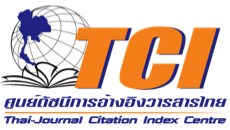ประสิทธิผลของ “STEMI Consultation Template” เพื่อลดระยะเวลา Door-to-needle time ของผู้ป่วยที่มารับการรักษาที่โรงพยาบาลชุมชน
คำสำคัญ:
STEMI, Consultation, DTN, SK, CCUบทคัดย่อ
วัตถุประสงค์: เพื่อเปรียบเทียบระยะเวลา DTN ที่โรงพยาบาลชุมชน ก่อนและหลังการนำ “STEMI Consultation Template”
มาใช้
รูปแบบการศึกษา: เป็น efficacy study รูปแบบ historical controlled intervention ที่ รพช. และ consult มาที่ CCU
โรงพยาบาลอุตรดิตถ์ ในผู้ป่วยที่วินิจฉัยว่าเป็นโรคกล้ามเนื้อหัวใจตายเฉียบพลัน ระหว่าง มิถุนายน 2558 ถึง เมษายน 2559
จำนวน 44 คน (กลุ่มก่อนมี template) และ พฤษภาคม 2559 ถึง เมษายน 2560 จำนวน 44 คน (กลุ่มที่ใช้ template)
วิธีการศึกษา: ผู้ป่วยกลุ่มอ้างอิง ได้รับการ consult รูปแบบเดิมคือ ใช้การสื่อสารด้วย Line และโทรศัพท์ โดยไม่กำหนด
เนื้อหา การ consult รูปแบบใหม่เพิ่มข้อมูลการเจ็บหน้าอก, ตำแหน่ง infarction, Killip classification และข้อห้ามในการให้
SK บันทึกระยะเวลาที่ผู้ป่วยได้รับ SK และติดตามผลการรักษา วิเคราะห์ระยะเวลาที่ได้รับ SK ด้วยสมการถดถอยพหุแบบการ
กระจาย poisson เพื่อปรับความแตกต่างของ เพศ อายุ โรคประจำตัว ความรุนแรงของโรค ตำแหน่งของโรค แพทย์ที่ปรึกษา
วันและเวรที่รับปรึกษา
ผลการวิจัย: ผู้ป่วยที่ใช้ STEMI Consultation Template มี DTN เฉลี่ย 91.1±113.3 นาที น้อยกว่ากลุ่มเดิมเฉลี่ย
208.2±106.6 (p<0.001) เมื่อปรับความแตกต่างข้างต้น การใช้ template ลดระยะเวลา DTN ลงได้เฉลี่ย 117.7 นาที (p<0.001)
เพิ่มโอกาสได้รับยา SK ภายใน 30 นาทีได้ร้อยละ 8.9 (p=0.715) และลดโอกาสเสียชีวิตลงได้ร้อยละ 17.0 (p=0.503) สรุป: ในผู้ป่วย STEMI ที่มารักษาที่ รพช. ควรแนะนำให้ใช้ STEMI Consultation Template ในการ consult
แพทย์เฉพาะทางทุกราย เนื่องจากพบว่าช่วยลดระยะเวลา DTN ได้อย่างมีนัยสำคัญทางสถิติ
คำสำคัญ: STEMI, Consultation, DTN, SK, CCU
เอกสารอ้างอิง
thrombolysis for ST elevation myocardial infarction. Postgrad Medical Journal, 2013; 89: 335-339.
2. Ranasinghe W G et al. Treatment time and outcome of thrombolytic therapy with streptokinase for acute
ST Segment Elevation Myocardial Infarction (STEMI) in a District General Hospital of Sri Lanka. Journal of the
Ceylon College of Physicians, 2014; 45: 28-31.
3. Robert L. McNamara et al. Impact of Delay in Door-to-Needle Time on Mortality in Patients with ST-Segment
Elevation Myocardial Infarction. American Jorunal of Cardiology, 2007; 100(8): 1227–1232.
4. Glickman SW et al. Delays in fibrinolysis as primary reperfusion therapy for acute ST-Segment elevation
myocardial infarction. American Heart Journal, 2010; 159: 998-1004.
5. เกรียงไกร เฮงรัศมี. มาตรฐานการรักษาผู้ป่วยโรคกล้ามเนื้อหัวใจขาดเลือดเฉียบพลัน. สถาบันโรคทรวงอก [ออนไลน์] 2555
[อ้างอิง ธันวาคม2556], แหล่งที่มาhttp://www.cdi.thaigov.net/cdi/folder_a/folder_f/1aa.pdf
6. นิยดา อกนิษฐ์, สุชาดา วิภากานต์, สุภาณี สิทธิสาร. การพัฒนารูปแบบการพยาบาลผู้ป่วยโรคกล้ามเนื้อหัวใจตายเฉียบพลัน
ชนิด STEMI โรงพยาบาลกระบี่. วารสารกองการพยาบาล, 2556; 40(3): 70-84.
7. Roshen C Maharaj, Heike Geduld and Lee A Wallis. Door-to-needle time for administration of fibrinolytics
in acute myocardial infarction in Cape Town. South Africa Medical Journal, 2012;102: 241-244.
8. Sultana R et al. Door to needle time of streptokinase and ST segment resolution assessing the efficacy of
reperfusion therapy at Karachi Institute of Heart Diseases. Journal Ayub Medical College Abbottabad,
2010;22(1): 150-3.
9. พรเพ็ญ ทุนเทพย์. การพัฒนารูปแบบการจัดการดูแลผู้ป่วยกล้ามเนื้อหัวใจตายเฉียบพลันโรงพยาบาลสุรินทร์. วารสารการแพทย์
โรงพยาบาลศรีษะเกษ สุรินทร์ บุรีรัมย์, 2554; 26(2): 247-261.
10. Sarfaraz A Zahid et al. Door to Needle Time and its Impact on Successful Thrombolysis. Journal of
Rawalpindi Medical College, 2012;16(1): 3-5.
ดาวน์โหลด
เผยแพร่แล้ว
รูปแบบการอ้างอิง
ฉบับ
ประเภทบทความ
สัญญาอนุญาต
ชื่อและที่อยู่อีเมลที่ป้อนในเว็บไซต์วารสารนี้จะถูกใช้เพื่อวัตถุประสงค์ที่ระบุไว้ของวารสารนี้เท่านั้น และจะไม่ถูกนำไปใช้เพื่อวัตถุประสงค์อื่นหรือส่งข้อมูลให้กับกับบุคคลอื่นใด











